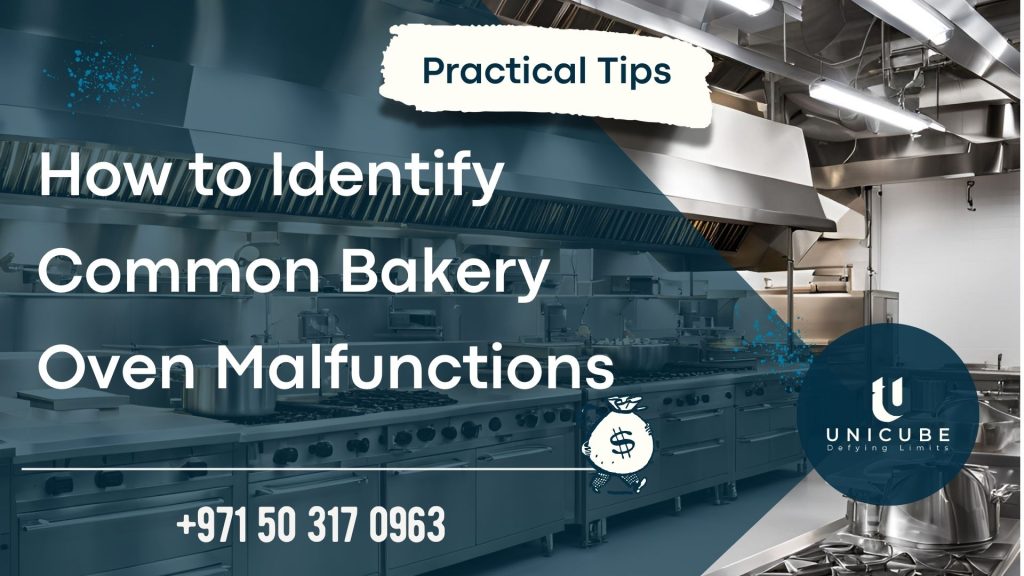In the bakery industry, ovens are fundamental equipment that directly impact product quality and production speed.
However, frequent oven malfunctions can be a nightmare for bakery owners, leading to production delays and costly repairs.
Therefore, it’s essential to understand how to identify common oven issues and address them before they worsen.
This article provides a practical guide on diagnosing common bakery oven malfunctions, helping you maintain quality production and increase operational efficiency.
Key Common Oven Malfunctions and How to Identify Them
1. Uneven Temperature Distribution
Uneven temperature is a frequent issue in bakeries. This problem can cause inconsistent baking results, where some sections of the bread may be undercooked while others are burnt.
How to Identify This Issue:
- Use an External Thermometer: Place an independent thermometer inside the oven to check if the temperatures match the oven’s display.
- Inspect Heating Elements: Faulty heating elements can result in uneven heat distribution.
- Check Temperature Sensors: Inaccurate sensors can also impact temperature levels, so inspect them regularly to ensure they function correctly.
2. Sudden Oven Shutdown
This is a critical problem, as it causes a complete halt in production, which is unacceptable during peak business hours.
How to Identify This Issue:
- Check Electrical Connections: Ensure the oven is connected to a stable power source and inspect all wires for any cuts or damage.
- Examine the Circuit Breaker: Power overloads may cause the breaker to trip, so check and reset it if needed.
- Review the Control Panel: The fault may be within the control panel, so inspect cables and electronic circuits to find the cause.
3. Unusual Smells or Smoke Inside the Oven
These signs may indicate a significant issue, as they could suggest burning components or grease buildup inside the oven.
How to Identify This Issue:
- Ensure the Oven is Clean: Grease and oil buildup inside the oven can lead to smoke, so clean the oven regularly.
- Inspect Internal Components: Damaged heating elements or insulation materials can produce unpleasant odors. Check their condition and replace them if needed.
- Examine Fans: If the issue is with ventilated ovens, the fans may be damaged or faulty.
Practical Tips to Avoid Oven Malfunctions
1. Regular Maintenance
Conducting regular maintenance is crucial in preventing malfunctions. A maintenance engineer can identify signs of wear and tear early, preventing more significant issues.
2. Train Staff on Proper Oven Use
Continuous training of staff on proper oven usage helps prolong oven life and minimizes the likelihood of malfunctions.
3. Use Genuine Replacement Parts
When replacing any oven parts, ensure you use genuine, manufacturer-approved parts, as alternative parts may cause unforeseen problems in the future.
4. Regularly Monitor Performance Indicators
Using tools like heat and time indicators allows you to detect any abnormalities in oven performance, enabling quick action to prevent major issues.
FAQs on Bakery Oven Malfunctions
Can Temperature Fluctuations in the Oven be Easily Fixed?
Yes, this issue can often be resolved by checking the heating elements and temperature sensors. If the problem is minor, replacing the faulty component may be enough without requiring a complete overhaul.
What Should I Do if the Oven Shuts Down Unexpectedly?
First, inspect the electrical connections and circuit breaker. If the issue persists, the problem may be with the control panel, in which case it’s best to consult a technician.
What’s the Best Way to Clean the Oven Regularly?
To avoid grease buildup, establish a regular cleaning schedule using industrial-grade oven cleaners and avoid using excess water.
Conclusion
Ovens are the heart of production in bakeries, and without them, it’s challenging to maintain consistent product quality.
By following the steps and tips outlined in this article, you can detect common oven problems early on, saving time, reducing costs, and enhancing production efficiency.
Remember, regular maintenance and quick response to minor malfunctions are essential to keeping operations running smoothly and extending the lifespan of your ovens.

